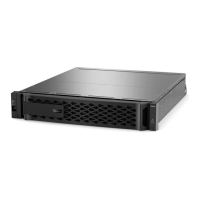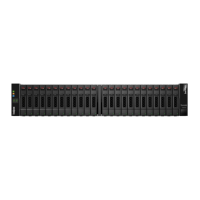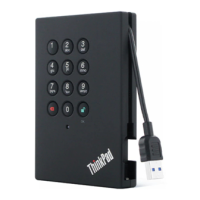b. Add the correct ports to the Cluster broadcast domain: network port modify -ipspace Cluster
-mtu 9000
Example
This example adds Cluster port e1b on “node-new”: network port modify -node node-new
-port e1b -ipspace Cluster -mtu 9000
c. Migrate the LIFs to the new ports, once for each LIF: network interface migrate -vserver
vserver_name -lif lif_name -source-node node-new -destination-node node-new
-destination-port port_name
SAN data LIFs can be migrated only when they are offline.
d. Modify the home port of the Cluster LIFs: network interface modify -vserver Cluster -lif lif_
name –home-port port_name
e. Remove the old ports from the Cluster broadcast domain: network port broadcast-domain
remove-ports -ipspace Cluster -broadcast-domain Cluster -ports node-new:port
f. Display the health state of the new controller: cluster show -node node-new -fields health
Step 4. Delete any ports of the original controller that no longer exist on the new controller (advanced
privilege level): network port delete -node node_name -port port_name
Step 5. Adjust the controller-management broadcast domain and migrate the controller-management and
cluster-management LIFs if necessary:
a. Display the home port of a LIF: network interface show -fields home-node,home-port
b. Display the broadcast domain containing the port: network port broadcast-domain show -ports
node_name:port_name
c. Add or remove ports from broadcast domains as necessary: network port broadcast-domain
add-ports / network port broadcast-domain remove-ports
d. Modify a LIF’s home port if necessary: network interface modify -vserver vserver -lif lif_name
–home-port port_name
Step 6. Adjust the intercluster broadcast domains and migrate the intercluster LIFs, if necessary, using the
same commands in Step 5.
Step 7. Adjust any other broadcast domains and migrate the data LIFs, if necessary, using the same
commands in Step 5.
Step 8. Adjust all the LIF failover groups: network interface modify -failover-group failover_group
-failover-policy failover_policy
Example
The following command sets the failover policy to broadcast-domain-wide and uses the ports in
failover group “fg1” as failover targets for LIF “data1” on “node3”: network interface modify
-vserver node3 -lif data1 -failover-policy broadcast-domain-wide -failover-group fg1
Step 9. Display the new controller's network port attributes: network port show -node node-new
Completing the upgrade
To complete the procedure of upgrading by moving storage, you need to delete any unused ports and LIFs
from the new controllers, re-enable storage failover or high availability, configure the Service Processor (SP),
install new licenses, and set up AutoSupport. You might also need to set up Storage Encryption and
configure the FC or CNA ports.
Step 1. From the storage system prompt, display information about logical interfaces by using the nneettwwoorrkk
iinntteerrffaaccee sshhooww command.
Chapter 6. Upgrading controller hardware 99

